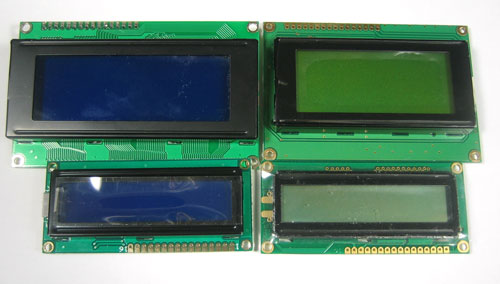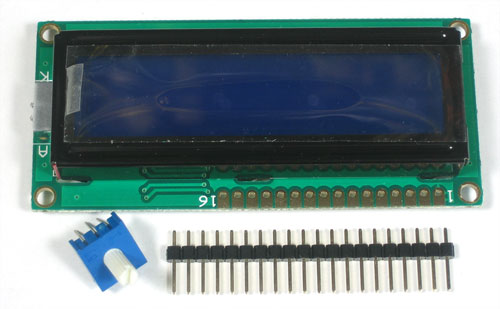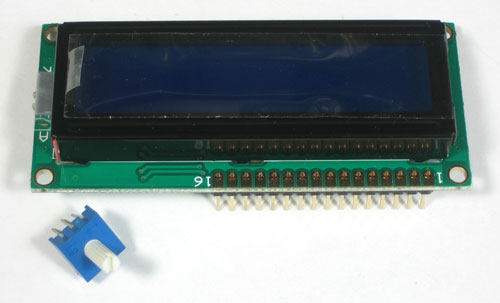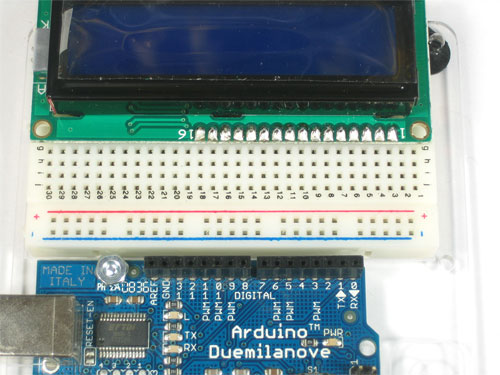This is an old revision of the document!
Table of Contents
Which LCD to use
This backpack will work with any 'standard'/'classic' character LCD. It does not work with graphic LCDs. Character LCDs come in sizes ranging from 8x1 (8 characters, one line) to 40x4 (40 characters, four lines). The backpack will also only fit LCDs that have a single line of pins at the top, not the ones that have a 2x10 or 2x8 connector on the side. Those are much rarer these days but just keep a look out for that!
Assembly
Putting together the backpack onto an LCD is a quick process, and should take only a few minutes with a soldering iron.
Parts check
Verify you have everything in the bag, there should be an assembled and tested PCB, a 2-pin and 3-pin 3.5mm terminal block. The backpack does not come with header or an LCD.
Terminal blocks
The terminal blocks allow you to easily attach and remove the LCD from your wiring, which we think is awfully handy. If you dont want the terminal blocks (they stick out a bit) you can always skip this step.
The terminal blocks come in 2 and 3-pin pieces. Slide them together.
Place the blocks over the corner area of the backpack so that the holes stick out (unless for some reason you want them to face the other way)
Solder them into place
Attach LCD
Next we will attach the backpack to the LCD. First we must put header onto the LCD, if you bought the LCD from us, it will come with a stick of header. Otherwise, pick up some standard 0.1" male header
These photos shows a 10K potentiometer, you can ignore it
If the header is too long, just cut/snap it short so that it is 16 pins
Next you'll need to solder the header to the LCD.You must do this, it is not OK to just try to 'press fit' the LCD!
The easiest way we know of doing this is sticking the header into a breadboard and then sitting the LCD on top while soldering. this keeps it steady.
Now we will attach the backpack. We will show how to do this in a permanent fashion. If you think you would like to remove and replace the LCD at some time, you can use a piece of 16-pin long 0.1" female header as a socket but be aware it will stick out a lot.
Download
Arduino Library
We made a modification to the LiquidCrystal library so you can use it for i2c, spi or straight-up-6-pin connections. You can get the modified library that supports SPI/i2c from GitHub.
To download and install it:
- Click the Downloads button in the top right of the GitHub page
- You will need to remove the old library, find the folder ArduinoIDE/libraries/LiquidCrystal and put it somewhere else for safekeeping.
- Uncompress the downloaded library, the folder will be called something like adafruit-LiquidCrystal-xxxxx. Look inside and verify you see a file called MCP23008.h. Rename the folder LiquidCrystal and drag it into your personal library folder which is in arduinosketchfolder/libraries
- Quit and restart the Arduino IDE
If you have a hankering to use the backpack as a general purpose i2c expander, you should use the plain MCP23008 library, also at github. Its for more advanced users, by the way.





